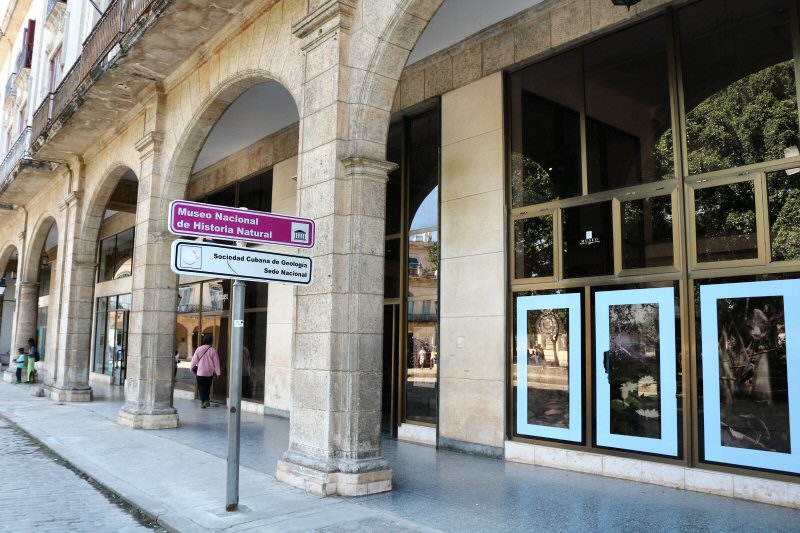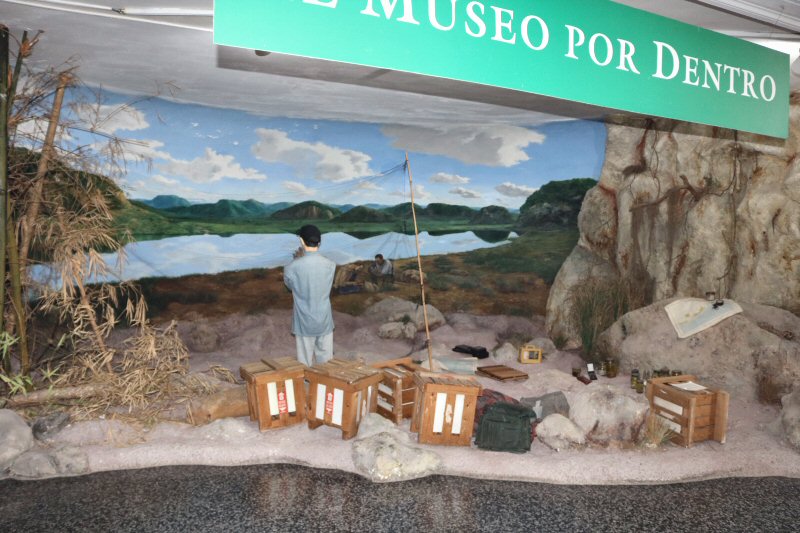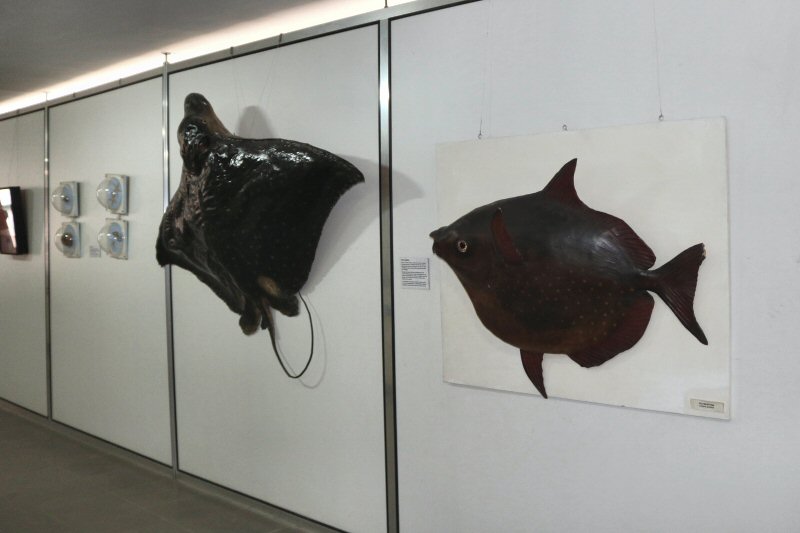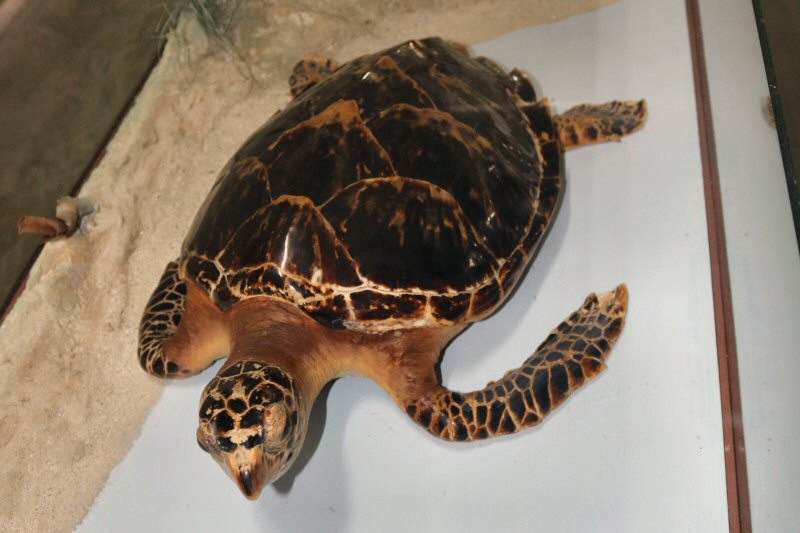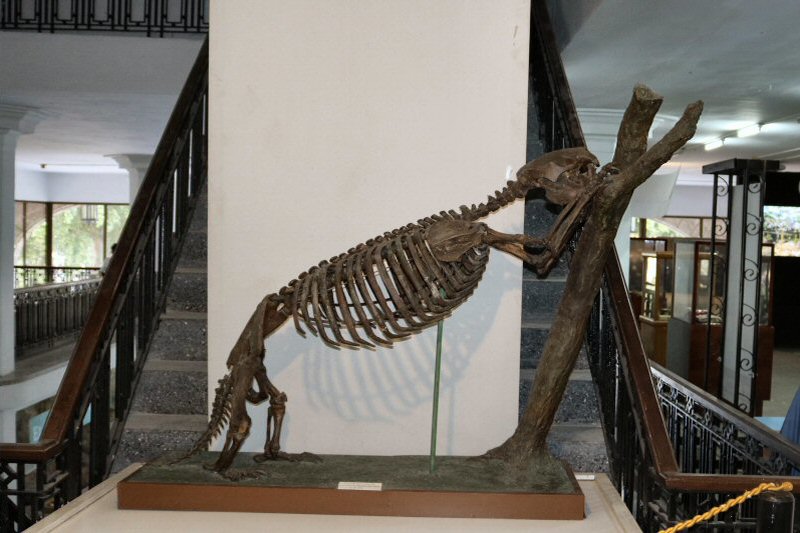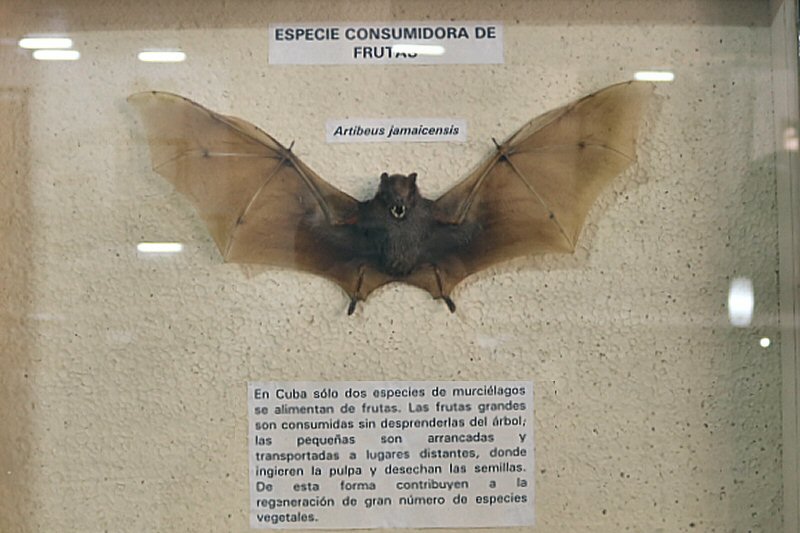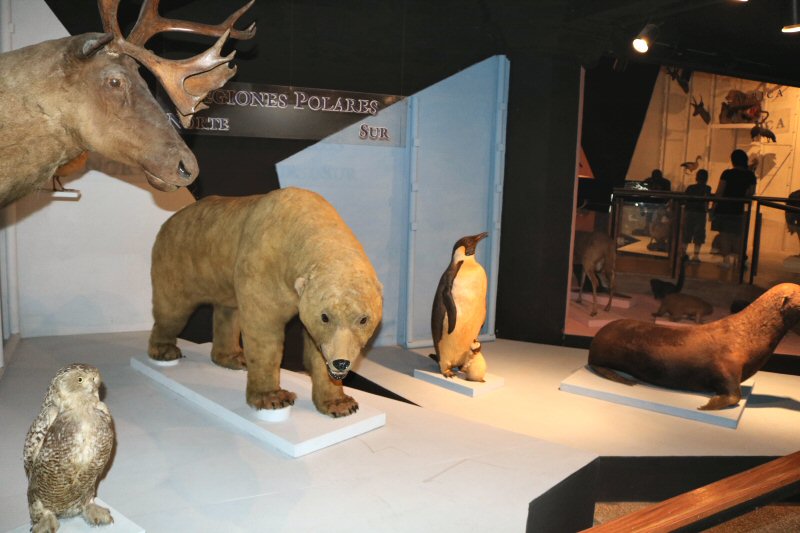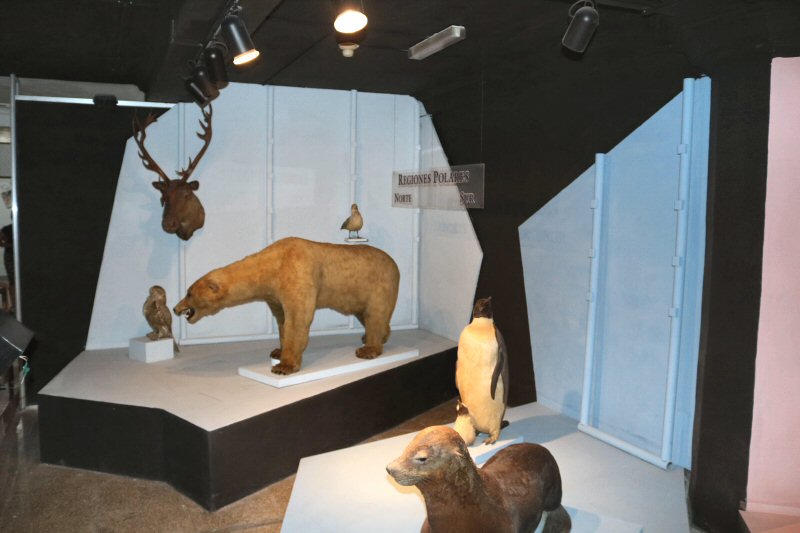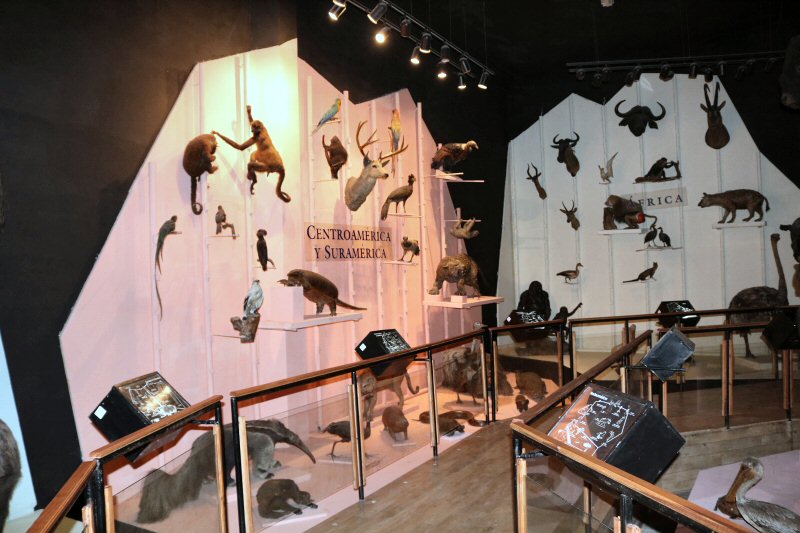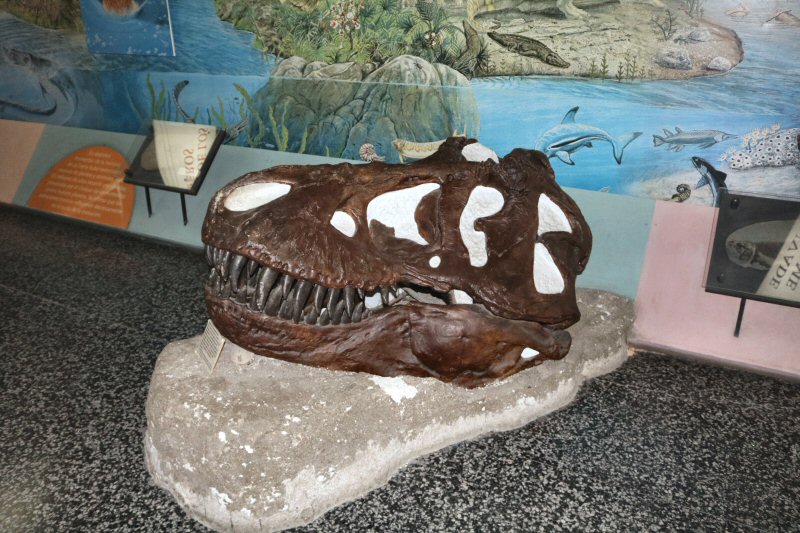
The new building of the Museo
Nacional de Historia Natural is in contrast with the surrounding
old, colonial buildings. It was founded with the mission to
collect, to investigate, to conserve, and to exhibit natural
objects to promote scientific and cultural knowledge of the
nature and to raise awareness of environmental issues among the
Cuban people.
It was inaugurated under the name of
Museum of Sciences Felipe Poey in 1964. Felipe Poey y Aloy
(1799-1891), founder of the Royal Academy of Medical, Physical
and Natural Sciences of Havana, was a Cuban scientist and
researcher in the field of natural sciences that had remarkable
work in ichthyology (the branch of zoology that deals with
fishes). In 1986, the institution was reorganized substantially,
receiving the name of the National Museum of Natural History,
but it was still insufficient to adapt to the functional
requirements of a modern cultural institution, so that in 1990,
the museum moved to the current building in Plaza de Armas that
was US Embassy building in the 1930s.
Currently, the museum has three
permanent exhibition areas on the ground floor, beside the
temporary ones with different themes: inside of the museum; room
for the mammals, the birds and the reptiles from other parts of
the world; and room of the history of the earth and the life.
The upper floor is reserved for the samples of the Cuban nature.
A diorama at the entrance
demonstrates the work of the scientists on the expedition of the
natural life. In the room where the mammals, the birds and the
reptiles from different geographical areas of the world are
exhibited, the stuffed animals are divided according to their
regions where they live. A brief tour, accompanied by the light
and sound effects, makes the museum more interesting,
particularly for the children. The room of the history of the
earth and the life offers a general overview to the evolution of
our planet until the emergence of the human species. In the
exhibition hall of the Cuban nature the original animals from
the island, as well as the fossils of already distinguished
plants and animals that once lived in the Caribbean region, are
exhibited. The prehistoric manjuarí fish (Cuban gar), iguanas
and the fruit bats are the objects that draw attention of the
majority of the visitors.
The institution owns more than 64
thousand samples in its collection, but the visitors can see
only about 1.000 of them. The museum preserves also a collection
of Cuban fish plates, painted by Otto Siepermann, that comprise
also the fishes of the Atlantic coast of tropical America.
The museum has a Children's Room called Colibrí (hummingbird), where educational workshops are held for children, a video room called Almiquí (solenodon), with audiovisual materials and a library (Biblioteca de Miguel L. Jaume) with more than 3.000 books and serials, and more than 3.000 reprints of articles. Miguel Luis Jaume Garcia was a Cuban malacologist (malacology is the branch of invertebrate zoology that deals with the study of the mollusca). A sales office where you can buy some CD’s and books about the world of animals in Cuba, such as the amphibians, bats etc., is at the ground floor.
The Museo Nacional de Historia Natural shares the building with the Headquarters of the Sociedad Cubano de Geología Sede Nacional (Cuban National Society of Geology), so that the Meeting Room on the fourth floor and the Information Center located on the third floor (open from 09.00 to 16.00) can be used together. The top of the building offers a beautiful view of the harbor and the Old Havana.

